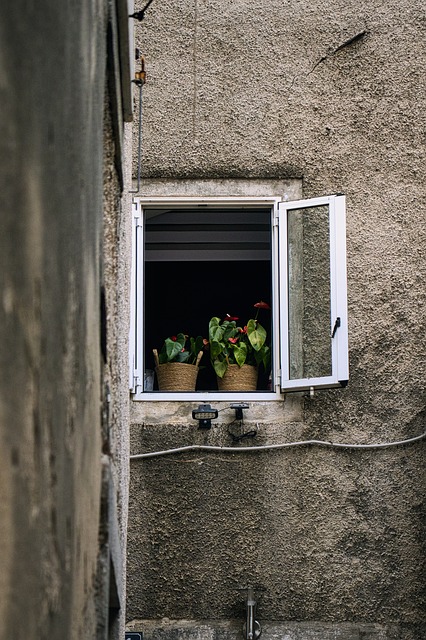Stucco is a durable and aesthetically pleasing exterior finish, but like any building material, it can deteriorate over time. Whether due to weather exposure, moisture intrusion, or structural issues, deteriorating stucco should never be ignored. Cracks, water stains, bulging sections, or crumbling areas are all signs that repairs may be necessary. If left unaddressed, these issues can lead to costly damage, including mold growth and structural instability.
If you’re dealing with deteriorating stucco, here’s what you need to know about diagnosing the problem, making repairs, and preventing future damage.
Step 1: Identify the Cause of Stucco Deterioration
Before making repairs, it’s essential to determine why your stucco is failing. Common causes of stucco deterioration include:
- Moisture Intrusion – Water getting behind the stucco can cause rot, mold, and cracking. This often happens when flashing, caulking, or drainage systems fail.
- Structural Movement – Settling, foundation shifts, or seismic activity can cause cracks that allow moisture infiltration.
- Improper Installation – Poorly mixed or applied stucco, lack of proper expansion joints, or missing weep screeds can lead to premature failure.
- Weather Damage – Extreme heat, cold, wind, and rain can cause stucco to erode over time, especially if it was not properly sealed.
- Aging and Natural Wear – Even well-maintained stucco will eventually degrade and require repairs.
Step 2: Assess the Severity of the Damage
Stucco deterioration can range from minor cosmetic issues to severe structural problems. Assessing the severity of the damage will help determine the best course of action.
- Small hairline cracks – Typically caused by natural settling or expansion/contraction cycles. These are mostly cosmetic but should still be sealed to prevent water intrusion.
- Larger cracks (wider than 1/8 inch) – These may indicate foundation movement, water damage, or improper installation.
- Soft or bulging areas – This suggests water has infiltrated behind the stucco, potentially leading to wood rot and mold growth.
- Crumbling or missing sections – Severe deterioration that requires immediate attention, often requiring complete removal and replacement of affected areas.
Step 3: Make the Necessary Repairs
The repair process will depend on the extent of the damage.
For Hairline Cracks:
- Clean the crack with a wire brush and remove any loose debris.
- Fill the crack with a high-quality elastomeric caulk or stucco patching compound.
- Once dry, paint over the repaired area with a breathable masonry paint to blend with the existing stucco.
For Larger Cracks or Crumbling Areas:
- Remove loose or damaged stucco with a chisel and hammer.
- If the underlying lath (metal or wood backing) is damaged, replace it before applying new stucco.
- Apply a bonding agent to help the new stucco adhere properly.
- Layer on fresh stucco in multiple coats, allowing each layer to dry before applying the next.
- Texture the surface to match the surrounding stucco and paint as needed.
For Water-Damaged Stucco:
- Identify and fix the source of moisture intrusion (e.g., replace faulty flashing, repair roof leaks, or improve drainage).
- Remove all soft, moldy, or deteriorated stucco and underlying materials.
- Replace rotted wood or insulation behind the stucco if necessary.
- Reapply stucco in multiple layers, ensuring proper sealing and waterproofing techniques are used.
Step 4: Prevent Future Stucco Deterioration
After repairing deteriorated stucco, take proactive steps to ensure it remains in good condition for years to come.
- Maintain Proper Drainage – Ensure gutters and downspouts direct water away from the home, and check that weep screeds (small vents at the base of stucco walls) are unobstructed.
- Inspect Stucco Regularly – Look for new cracks, discoloration, or bulging areas, especially after heavy rain or extreme weather.
- Seal and Paint Stucco – Use a breathable masonry sealer or elastomeric paint to protect against moisture while allowing trapped vapor to escape.
- Address Foundation Issues Promptly – If your home is shifting or settling, have a professional assess the foundation to prevent further stucco cracking.
- Keep an Eye on Caulking – Inspect caulking around windows, doors, and flashing, and replace any deteriorated sealant.
When to Call a Professional
While minor stucco repairs can be a DIY project, significant deterioration often requires professional intervention. Call a stucco specialist or contractor if:
- The damage is extensive, covering large portions of the exterior.
- There are signs of moisture intrusion, mold growth, or wood rot beneath the stucco.
- Structural issues, such as foundation problems, are suspected.
- The stucco has repeatedly failed despite previous repairs.
Final Thoughts
Deteriorating stucco is more than just a cosmetic issue—it can be a warning sign of underlying problems that need to be addressed. By identifying the cause of the damage, making timely repairs, and taking preventative measures, you can protect your home from costly repairs down the road. Regular maintenance and inspections will help ensure your stucco remains strong, weather-resistant, and visually appealing for years to come.
If you’re unsure about the severity of your stucco issues, consulting a professional can provide peace of mind and help you avoid more significant problems in the future.

